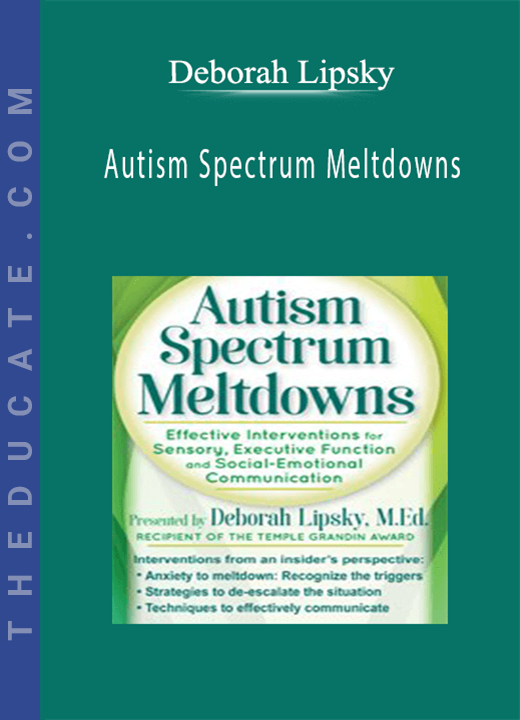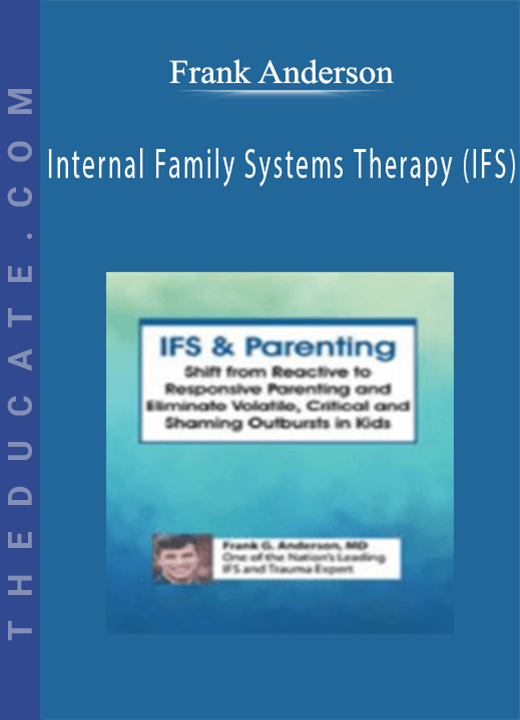Description

Autism Spectrum Meltdowns: Effective Interventions for Sensory, Executive Function and Social-Emotional Communication – Deborah Lipsky
- What causes the unusually strong reactions of a meltdown?
- Can you see it coming?
- Is it a meltdown or a tantrum?
- Is it willful, manipulative behavior?
- Is ‘Fight or Flight’ the only option?
Individuals on the autism spectrum often react very strongly to seemingly minor changes in routine, patterns, food, clothing, noise, and a host of other environmental factors. Understanding and recognizing personal triggers will be a major benefit in developing a plan for yourself or individuals you work with to lower the levels of anxiety and avoid a catastrophic reaction.
Deborah Lipsky, M.Ed., presents a rare and unique perspective from someone who lives with autism every day. Through a combination of personal experiences with professional knowledge she will offer you a rare glimpse into the neurological processing differences of an individual with autism and explain the physical and mental processes of a meltdown. You will participate in interactive exercises where you are “autistic” for a moment to gain a greater appreciation of the challenges individuals with autism face. You will learn how to recognize the differences between a meltdown and a behavioral tantrum and what can trigger a meltdown. You will walk away with effective intervention strategies to use before, during, and after a meltdown.
- Design a sensory conducive friendly environment for an individual on the autism spectrum to improve their level of functioning.
- Articulate the impact of communication dysfunction on learning, behavior and social interactions in clients diagnosed with autism spectrum disorder.
- Describe the neurological and physiological processes of meltdowns in a person diagnosed with autism and utilize this information when selecting a treatment intervention.
- Utilize clinical strategies to de-escalate a meltdown based on sensory, anxiety, communication or executive function triggers.
- Differentiate between a meltdown and a behavioral tantrum in clients with autism and apply appropriate clinical strategies to de-escalate the situation.
- Design and implement an individualized intervention/crisis plan for your clients with Autism Spectrum Disorder.
The Neurological and Physiological Differences of Autism
- Sensory and Visual Environments
- Sensory evaluation: Asking the right questions
- Large motor skills, fine motor skills, eating, hearing, smell, touch
- Creating a sensory friendly environment
- Impact of sensory dysfunction on learning, behavior and social interaction
- Executive Function (EF)
- Impact of EF on daily life
- EF manifestations seen in meltdowns
- Strategies to limit consequences of EF
- Social/Emotional Communication
- Common pitfalls in communicating with individuals with autism
- Communication differences with autism
- Impact on learning, behavior and social interaction
- Strategies to help facilitate communication
Anxiety to Meltdown
- Recognizing the triggers
- What does a meltdown look like?
- What a person with autism experiences during a meltdown
- Common behaviors seen in meltdowns
- Meltdown or tantrum?
Effective Behavioral Interventions Based on the S.C.A.R.E.D. Model
- Behavior as a form of communication
- Inappropriate interventions … What never to do
- Appropriate strategies to de-escalate the situation
- Intervention in the school system
- Creating a personalized intervention/crisis plan







8 reviews for Autism Spectrum Meltdowns: Effective Interventions for Sensory, Executive Function and Social-Emotional Communication – Deborah Lipsky
There are no reviews yet.